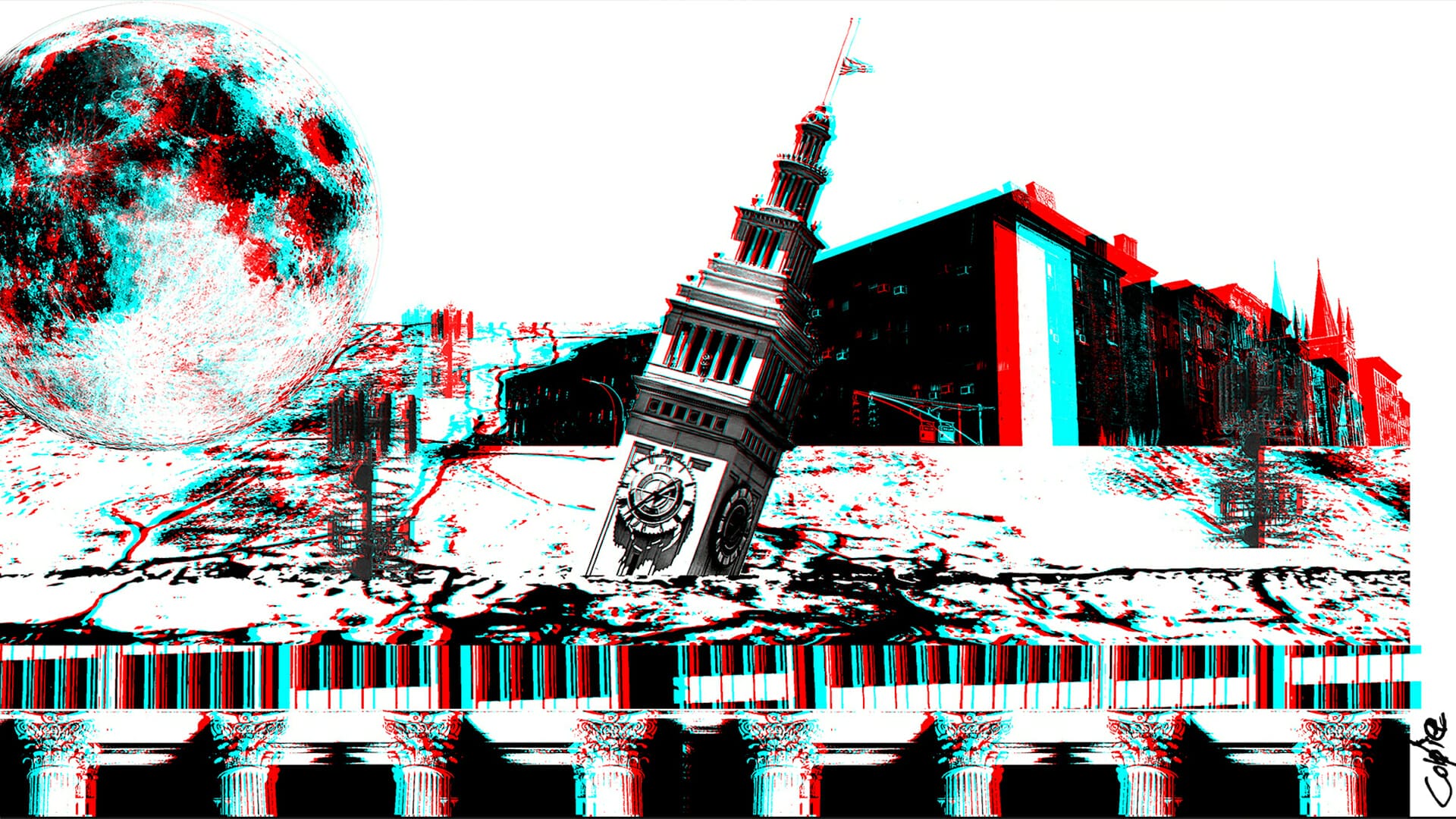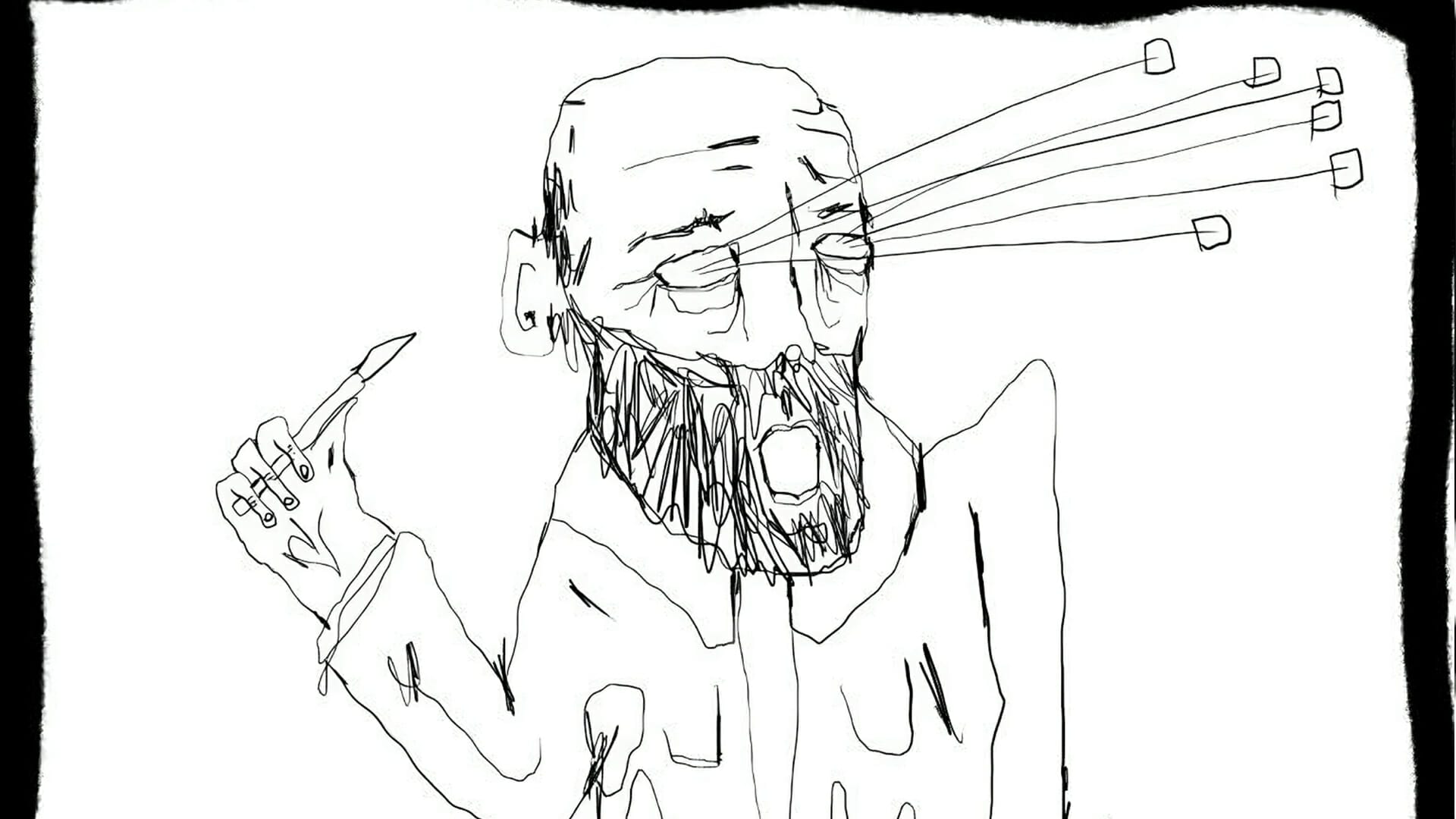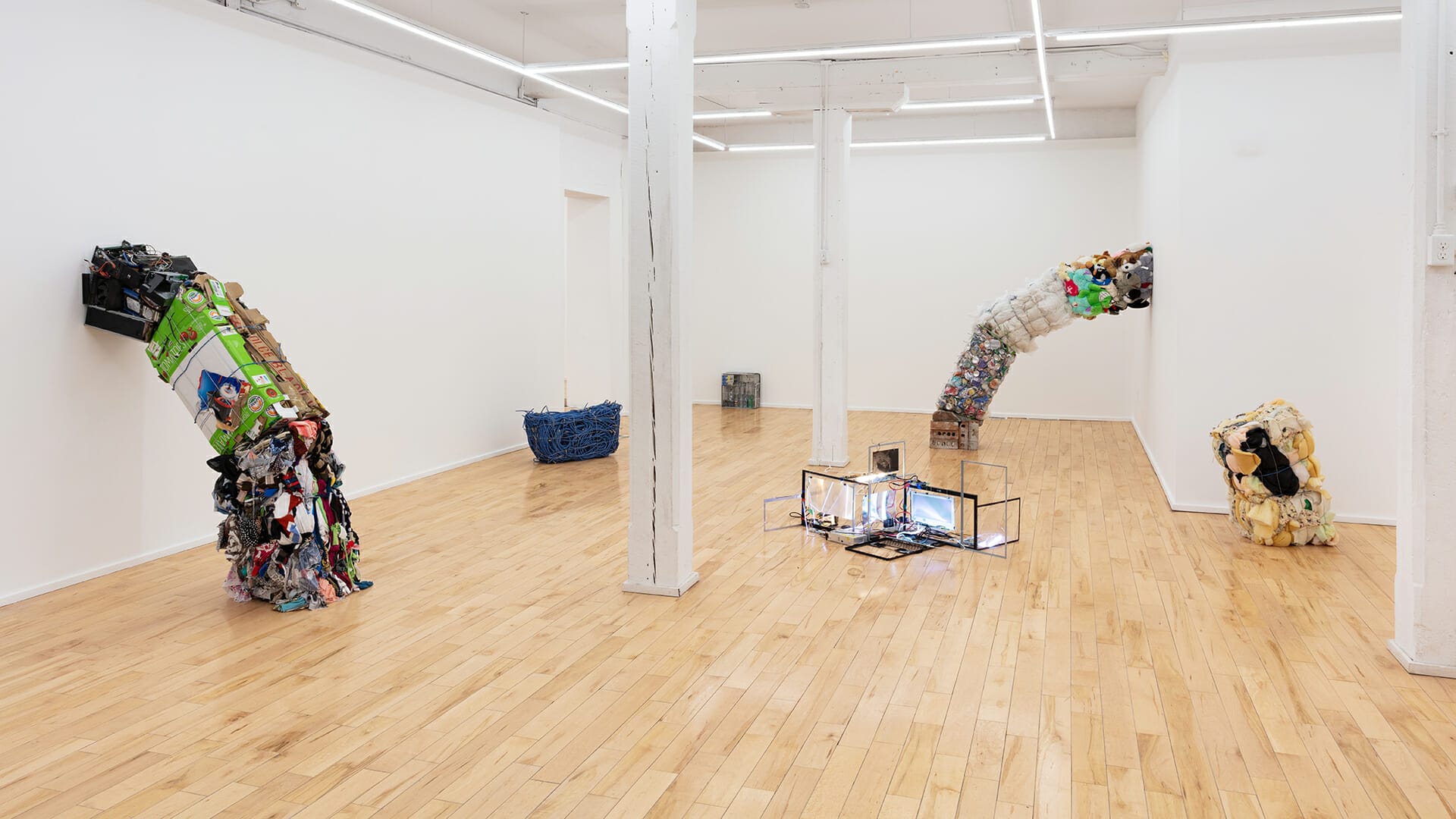
Adam Basanta in Conversation with Fakewhale
An artist born in Tel-Aviv and now residing in Montreal, Canada, Adam Basanta’s distinctive perspective on technology, both archaic and modern, has not only taken the art world by storm but also ignited debates and conversations around the inherent dichotomies of waste, value, and history. With an approach that dissects the lines between the computational, biological, cultural, and economic forces in technology, Basanta constructs masterpieces that echo with both choreographic and performative undertones.
His accolades are testament to his talent and depth of thought: from the Japan Media Arts Prize to the Aesthetica Art Prize, Basanta has garnered a significant reputation, leaving an indelible mark in places like the Musée des beaux-arts de Montréal, Fotomuseum Winterthur, and the National Art Centre Tokyo.
In this interview, Fakewhale provides an in-depth insight into the mind of this prolific artist, decoding his inspirations, his exploration of material and value, and his keen observations on human consumption behaviors. Through Adam’s eyes, we witness the duality of the contemporary and the age-old, challenging the narrative of consumption in our times.
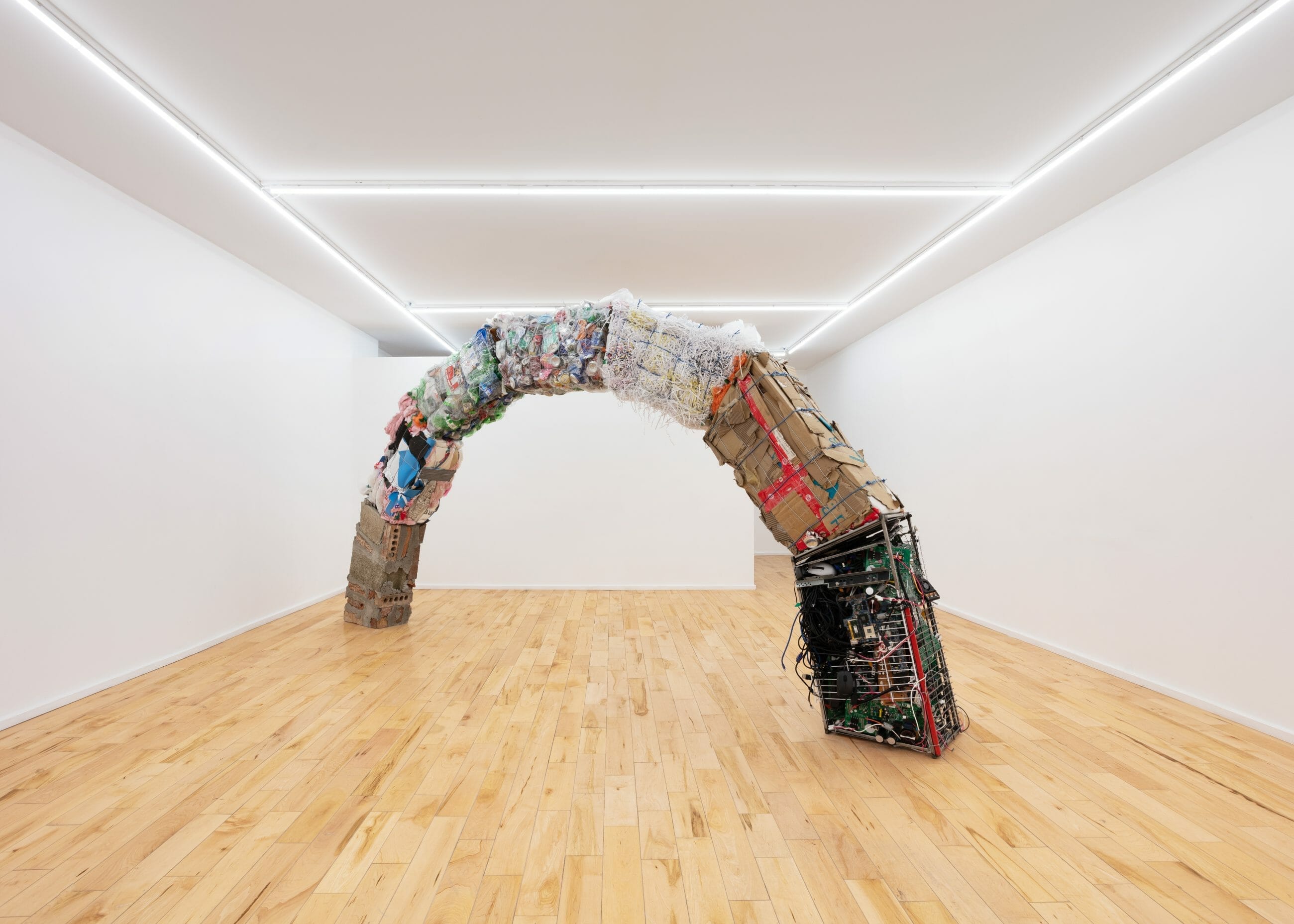
Fakewhale: Adam, your exhibition offers a unique perspective on waste, turning it into something almost akin to archaeological treasure. What inspired you to challenge conventional views on waste and its implications for human behavior?
Adam Basanta: In fall 2022, I spent a few months in Italy for an art residency. I found it to be a fascinating place to think about the multiple intertwining of history in the present (which will become the next “history”), and how this impacts our ideas about value and waste.
I visited a Roman amphitheatre in Brescia (at The Capitolium of Brixia), an impressive collection of massive stone slabs and collapsed arches. It was abandoned after the fall of the Roman empire, and in the following centuries supplied locals with stone to build homes and structures. Eventually, it was completely buried by erosion from a nearby hill and forgotten, then rediscovered and excavated in the 19th century. Today it is a valued heritage site and museum, contributing to the local economy.
While I walked around the destroyed amphitheatre, I noticed an abandoned 17th century building leaning against the edge of the archeological site. Pressed up against the abandoned building was another old building that was still inhabited. I looked up to the balcony on the top floor: there were clothes hanging on a clothesline, a few colourful Nike t-shirts. I wondered if the amphitheatre, basically their backyard, was ever a nuisance to the people who lived there. Was I the only tourist to look up at their laundry? Would those drying t-shirts become valuable in a few thousand years? What will future archeologists make of the Nike logo?
It was a complete overlap of time periods, of differing senses of values relative to differing needs, an overlap of stories about who we are and what we have been or can and want to be. And it is these stories which determine why some things are categorized as garbage and other things as prized archaeological findings (although ironically, what tells archaeologists most about the daily lives of people is their garbage).
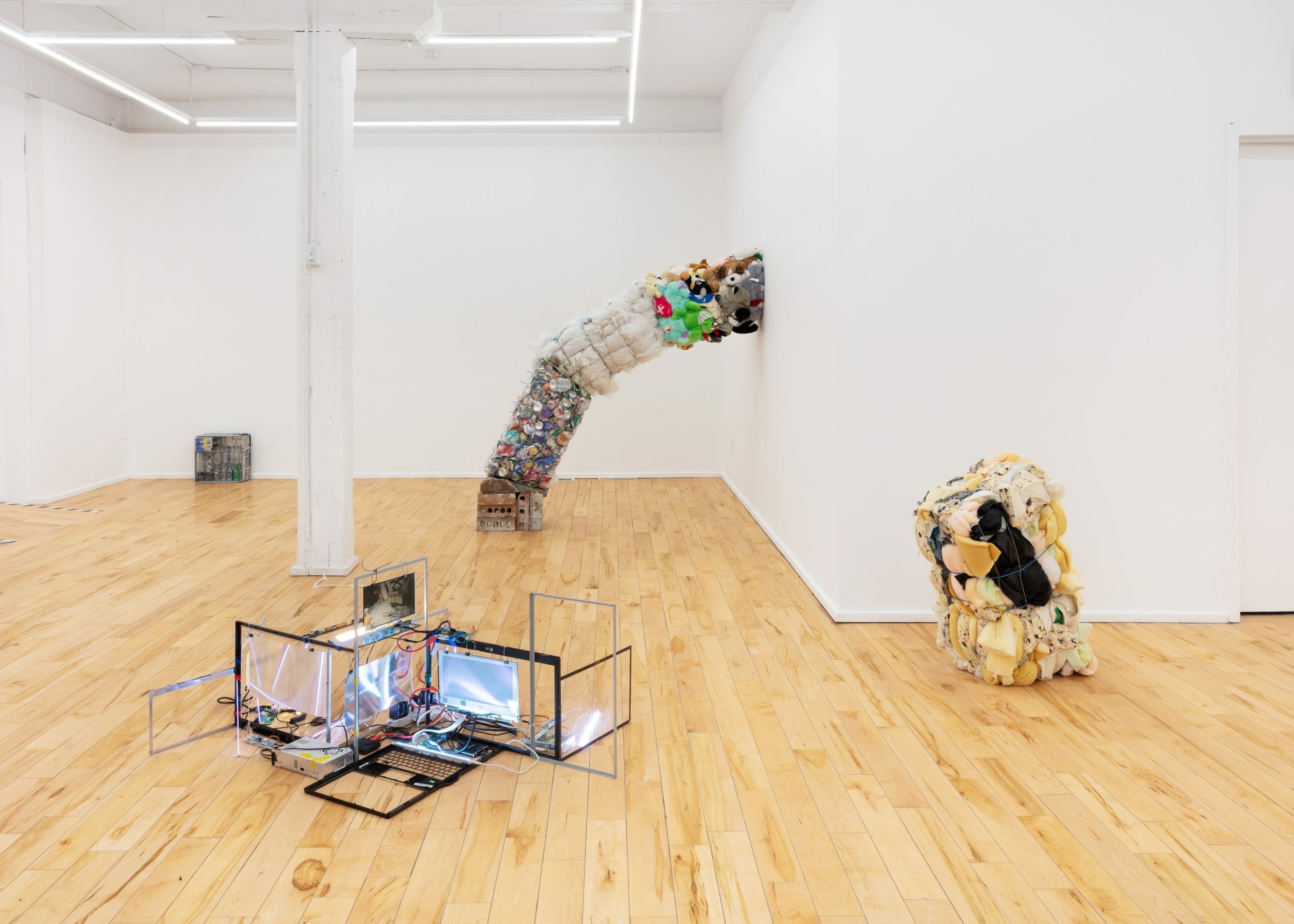
Fakewhale: You’ve chosen to source materials from local industries and waste management facilities for your work. Can you talk about the importance of this choice, and how it feeds into the overarching themes of your exhibition?
Adam Basanta: It is important to me that my work doesn’t just “address an issue” solely in the representational plane. I’m interested in art where the subject matter is integrated into the mechanics and functioning of the work: the work is performing the idea, rather than representing it.
I don’t have a particularly wise thing to say about waste or recycling, in terms of a “solution” or an “objective” perspective. First and foremost because despite my ongoing research, I am not an expert, nor a scientist nor a researcher. I don’t pretend to have an answer to global questions nor that art is the best medium to communicate this information. All I can offer is my own perspective as a very particular individual sharing this historical moment.
This project is really about exploring the feeling of my own inevitable and inextricable complicity in climate change – despite my concerns and feelings about the topic, despite the fact I am an ‘environmentalist left wing’ person, despite the fact that “I care”.
In examining this internal tension and emphasizing self-reflexivity, it was important to create a resonance between the exploration of the topic and the material production of the work: It was important to learn about how commercial recycling works (not as a critic, but as a learner), to visit and see who works there (largely immigrants and people of colour), to know what it smells like in there. It was crucial that I would do the dirty work myself, rather than place more burden on these invisible labourers spending hours sorting garbage over noisy conveyor belts. It was important to bring bags of pre-sorted recycling to my studio, to clean them in large pools of soap water, dry them and re-categorize them. To know what that process smells like, and how long it takes. To have a taste of what working in a recycling centre would be like, to know the thankless task of making shameful waste disappear, out of sight and out of mind.
It was a bit gross and tedious, but strangely satisfying: there is so much grift in ‘being an artist’, but this felt like very honest work. Like a sort of penance for crimes I never had a choice not to commit.
This hidden process is important: the works would be completely different if the recycled waste was cleaned by employees or studio assistants. It is a very impractical way of making work, which convinces me it is probably the right way to make work at this moment. So much so, that I filmed large parts of this process in my studio, with the footage played back on the in-situ video 3-channel video installation Invisible Labour, which itself is constructed from still functioning e-waste from disassembled LCD screens.

Fakewhale: The concept of using an arch-bridge, a Roman architectural form, is intriguing. Can you elaborate on how employing ancient techniques adds depth and complexity to your modern subject matter?
Adam Basanta: There is something fascinating about the arch form. It is of course most famous for its perfection during the Roman era, but basic arch structures date back at least a few thousand years earlier to Mesopotamia.
I am moved by the mathematical beauty of it, the way an arch holds itself up, unmortared and unsupported, through a balance of distributed forces. It is so simple yet improbable. The genius of the arch is based on a deep understanding of material and the world which shapes it, rather than forcing form on to matter. It is easy to romanticize the loss of “ancient wisdom”, but nonetheless, there is a real sense that despite our many technological advancements (production of plastic toys, for instance, is an amazingly complex process I am similarly fascinated by), we have forgotten some important underlying principles.
At the same time, monumental architecture always has a clear symbolic function: to inspire awe, but also to tell ourselves a story about who we are, materializing real or imagined values and extending them beyond the individual human scale. It is in this sense that I try to mix this facet of monumental architecture with our contrasting obsessions of material accumulation and disposability of subservient objects.

Fakewhale: Your exhibition seems to be a commentary on current consumption habits, using the lens of archeology. What do you hope visitors will take away regarding their own behaviors and lifestyles?
Adam Basanta: I think most visitors will already be aware that we are in the midst of an environmental crisis, and that recycling is problematic (in terms of energy use, releasing microplastics, cost effectiveness, various recycling “scams” etc). We all know that our individual habits don’t make a difference, but that if we all changed our habits together it would make a difference. That’s a big tension to hold: quite unpleasant, guilt-inducing and hope crushing. Which of course is why we tend not to hold this tension for very long, it is much easier to be angry and demand solutions, or to give up and just ‘get ours’ while we can.
The exhibition is my attempt to hold this tension over several months, to exercise it within the context of exploratory action. To understand my own orientations towards it. I guess my hope would be that visitors do the same thing, hold this tension and explore it on their own: embrace the weird mix of guilt and anger and hopelessness on the one side and belief in ingenuity and need-for-change and hope on the other. As Tim Morton argues in All art is ecological, this would be the first honest step towards whatever is next.
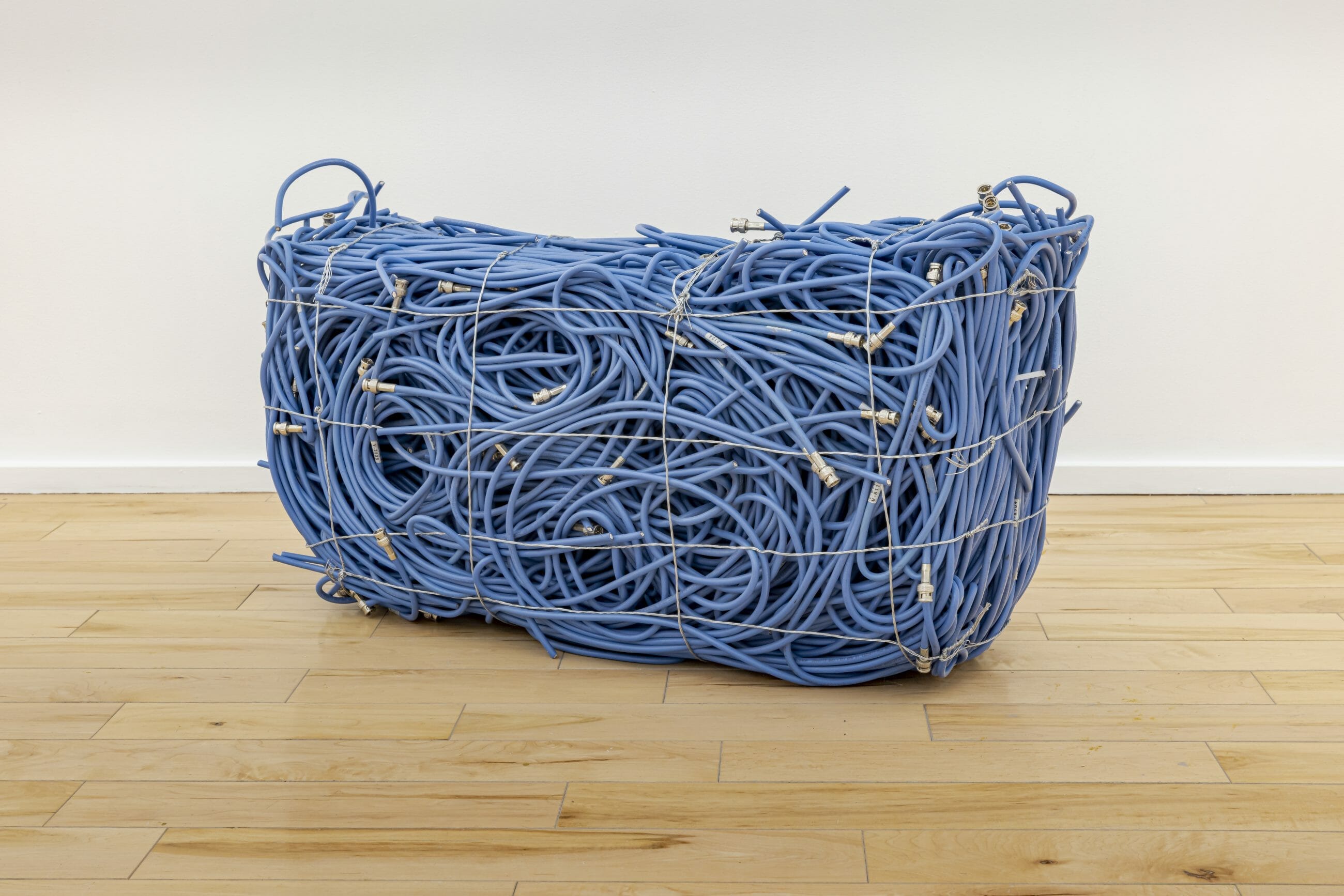
fakewhale
Founded in 2021, Fakewhale advocates the digital art market's evolution. Viewing NFT technology as a container for art, and leveraging the expansive scope of digital culture, Fakewhale strives to shape a new ecosystem in which art and technology become the starting point, rather than the final destination.
You may also like
Erris Huigens, Passer-by at FORM
“Passer-by”, Erris Huigens, at FORM Amsterdam, 27.02.24 – 31.03.24. Erris Huigens
Coldie: Art’s Contribution to Decentralization
Coldie is an American mixed media artist who masterfully fuses digital collage, 3D design, and augme
2 – The Rise of Hisan
Somewhere outside of the Mall of America, Minnesota, United States “Another successful mission





